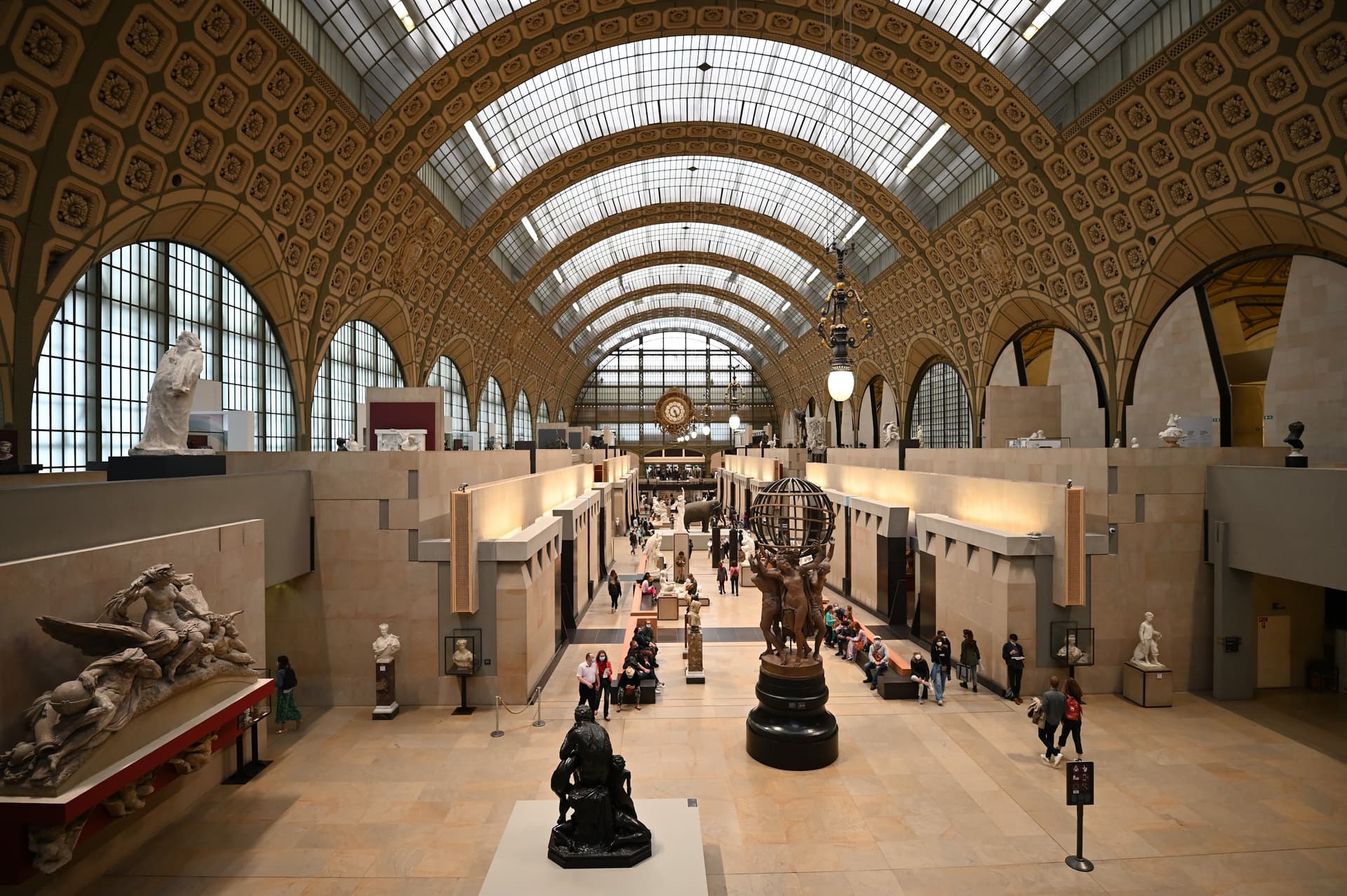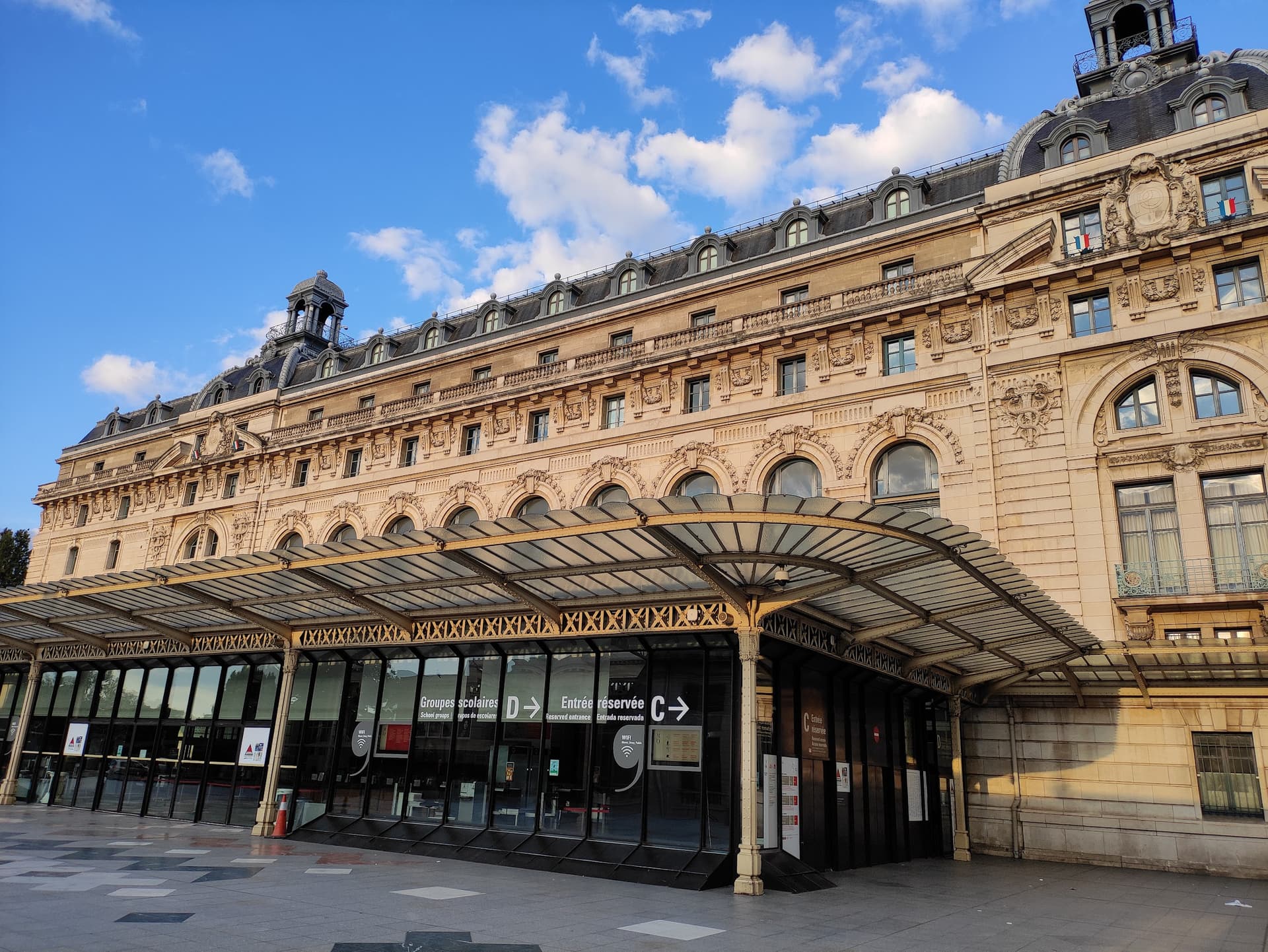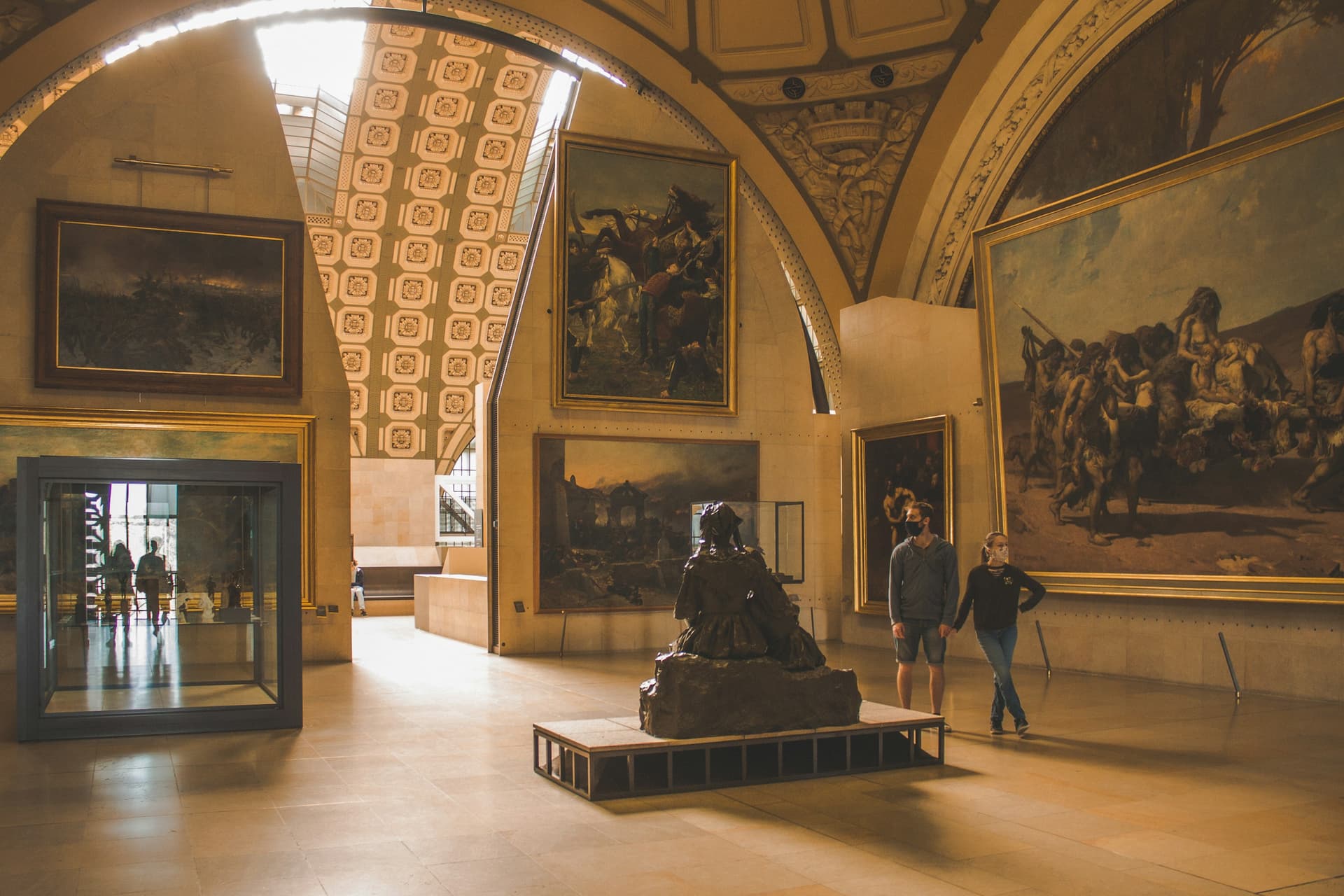Audio GuideMusée d'Orsay
Major 19th- & 20th-century European art collections housed in a monumental, former railway station.
The Musée d'Orsay is situated on the Left Bank of the Seine in Paris, within the grand former Gare d'Orsay, a railway station constructed between the late eighteen nineties and the turn of the century for the nineteen hundred Exposition Universelle. It was inaugurated in December nineteen eighty-six by President François Mitterrand, serving as a link between the Louvre and the Centre Pompidou.
The building features impressive architectural elements, including a magnificent central nave and a barrel-vaulted atrium, redesigned by the Italian architect Gae Aulenti. The façade is decorated with six bronze sculptures representing continents.
Inside, the Musée d'Orsay hosts the world's largest collection of Impressionist and post-Impressionist art. Visitors can admire masterpieces by artists such as Claude Monet, Vincent van Gogh, Édouard Manet, Edgar Degas, and others. Highlights include Monet’s The Saint-Lazare Station and Van Gogh’s Starry Night Over the Rhône. Unique installations, such as a scale model of the Paris Opera at a ratio of one to one hundred, enhance the visitor experience.
The museum exhibits about three thousand pieces of art from the mid-nineteenth century to the early twentieth century, including paintings, sculptures, furniture, and photography. Special collections and temporary exhibitions, like A Passion for France, add further depth to its offerings.
The Musée d'Orsay draws in approximately three point nine million visitors each year, establishing it as one of France’s foremost attractions. It acts as a cultural hub of Paris, offering both art enthusiasts and tourists an engrossing journey through European art history within a historic and elegant environment.



